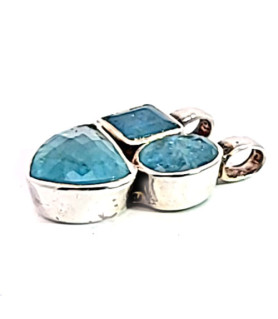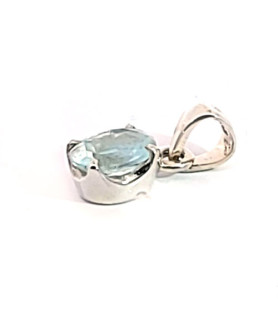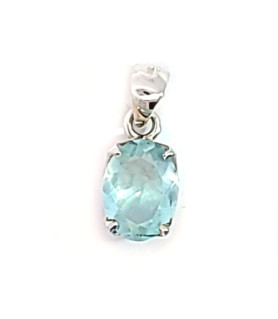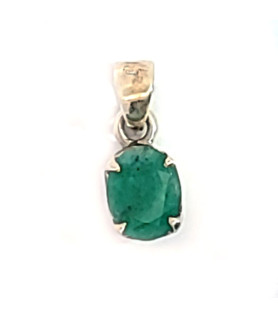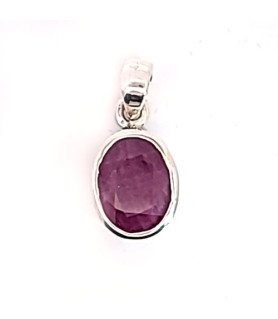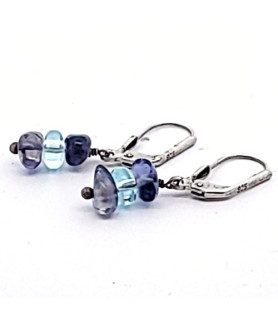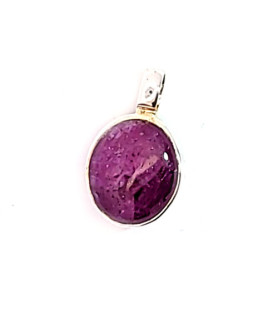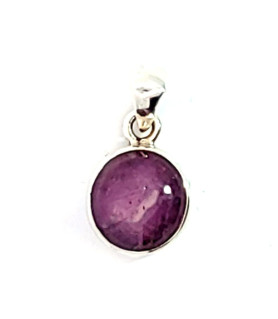
Jewellery
Active filters

Produkte werden geladen...
-
Faceted aquamarine design...
€159.00Aquamarine (Latin for “water of the sea”) got its name from its color, which ranges from a delicate light blue to aquamarine blue and dark greenish blue. The coloring element for the blue representative of the beryl group is iron.
Complete size: approx. 17 x 27 mm -
Faceted aquamarine pendant
€49.00Aquamarine (Latin for “water of the sea”) got its name from its color, which ranges from a delicate light blue to aquamarine blue and dark greenish blue. The coloring element for the blue representative of the beryl group is iron.
Stone size: approx. 7 x 9 mm -
Faceted aquamarine pendant
€59.00Aquamarine (Latin for “water of the sea”) got its name from its color, which ranges from a delicate light blue to aquamarine blue and dark greenish blue. The coloring element for the blue representative of the beryl group is iron.
Stone size: approx. 9 x 12 mm -
Faceted emerald pendant
€49.00Mineralogically speaking, emerald belongs to the beryl family, which also includes aquamarine and morganite. The intense green coloration is caused by chromium. Famous sites exist in Brazil, but emeralds have also been found in Austria
-
Faceted emerald pendant
€49.00Mineralogically speaking, emerald belongs to the beryl family, which also includes aquamarine and morganite. The intense green coloration is caused by chromium. Famous sites exist in Brazil, but emeralds have also been found in Austria
-
Faceted emerald pendant
€69.00Mineralogically speaking, emerald belongs to the beryl family, which also includes aquamarine and morganite. The intense green coloration is caused by chromium. Famous sites exist in Brazil, but emeralds have also been found in Austria
-
Faceted emerald pendant
€69.00Mineralogically speaking, emerald belongs to the beryl family, which also includes aquamarine and morganite. The intense green coloration is caused by chromium. Famous sites exist in Brazil, but emeralds have also been found in Austria
-
Faceted ruby pendant
€59.00The name is derived from the Latin rubeus, "red", which gave rise to ruby, which in the 12th century replaced the term carbuncle, which was used for all red gemstones. The coloring element of this red representative of the corundum group is chromium.
-
Faceted ruby pendant
€69.00The name is derived from the Latin rubeus, "red", which gave rise to ruby, which in the 12th century replaced the term carbuncle, which was used for all red gemstones. The coloring element of this red representative of the corundum group is chromium.
-
-
Ruby donut 30 mm
€59.00The name is derived from the Latin rubeus, "red", which gave rise to ruby, which in the 12th century replaced the term carbuncle, which was used for all red gemstones. The coloring element of this red representative of the corundum group is chromium.
-
Ruby pendant (star ruby)
€59.00The name is derived from the Latin rubeus, "red", which gave rise to ruby, which in the 12th century replaced the term carbuncle, which was used for all red gemstones. The coloring element of this red representative of the corundum group is chromium.
-
Ruby pendant (star ruby)
€49.00The name is derived from the Latin rubeus, "red", which gave rise to ruby, which in the 12th century replaced the term carbuncle, which was used for all red gemstones. The coloring element of this red representative of the corundum group is chromium.
-
Ruby pendant (star ruby)
€59.00The name is derived from the Latin rubeus, "red", which gave rise to ruby, which in the 12th century replaced the term carbuncle, which was used for all red gemstones. The coloring element of this red representative of the corundum group is chromium.







